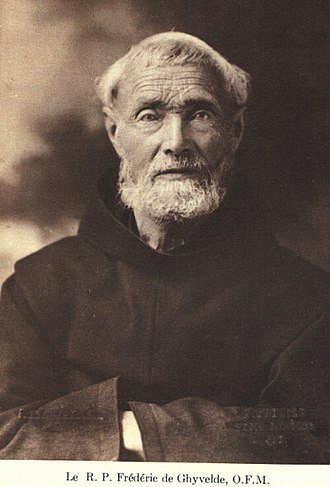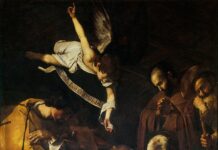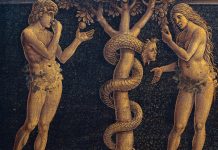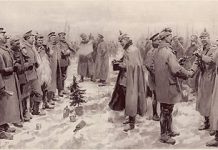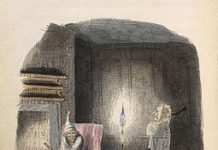Blessed Frédéric Janssoone, O.F.M. (1838 – 1916) hailed from France, from the town of Ghyvelde, in the northwest most corner, where the language was Flemish, and not French. After a difficult and impoverished, but holy and pious, upbringing, he joined the Friars Minor, spending his years of priestly ministry as custos of the sacred sites of the Holy Land, a spiritual ministry given to the Franciscans since the Middle Ages.
In 1881, he came to Canada, to the shores of the Saint Lawrence in Quebec, but got into a bit of hot water when in a sermon he commented on liberalism, and church-state relations, a hot topic in Quebec at the time, and now. Besides that, he was a popular preacher, even if he went back to Palestine in 1882.
Canada still beckoned, and Father Janssoone returned in 1888, spending the last three decades of his life here, preaching, converting, raising funds, writing. His home base was the shrine of Notre-Dame-du-Cap, outside Trois-Rivières. He was asked to use his many gifts to revivify the shrine. It was also he who brought the Friars Minor, the reformed Franciscans, back to this country, after the early Recollets had been forbidden to take new novices.
It was at this shrine in 1879 that the miracle of the ‘ice bridge’ occurred. The people had been given permission to build a new church at the shrine, but they had to transport the materials across the Saint Lawrence, a mile-and-a-half wide. That year, however, the river didn’t freeze, part of that phenomenon of pre-industrial global warming, one might suppose. The people prayed the Rosary and sought Our Lady’s help for the river to freeze. Lo and behold, on the very solemnity of Saint Joseph, March 19th, a bridge of ice formed across the river, wide and solid enough to transport all the materials, with open water on either side, evocative of the parting of the Red Sea. I always thought it would take some courage to walk through with those Israelites, with walls on water on either side. I think the same thing about taking a full-loaded horse and wagon across that ice bridge. But those habitants, they were brave men. The miraculous bridge lasted until the Annunciation, March 25th, just long enough to get everything across. The church was duly built, and still stands.
Soon enough, miracles abounded, including the statue of Our Lady of the Cape – a copy of how the Mother of God was said to have appeared to Catherine Labouré in Paris in 1830 – when, on June 22, 1888, soon after Father Janssoone’s second arrival here, on the inauguration day of the shrine, he was in the chapel with two others, a fellow Franciscan and a parishioner. To their surprise, the statue’s face became life-like, and Our Lady opened her eyes for five to ten minutes and looking around. They wandered to and fro, to see if they were seeing an optical illusion of some sort. But, as far as they could tell, it was real.
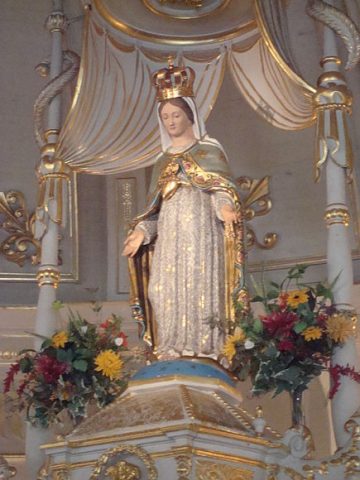
It seems a fitting miracle, for from what few photographs we have of Father Janssoone, he has quite intense eyes, which seem almost to see ‘through’ you, as do most pictures of saints in the modern era, for whom we have such images. I’d imagine Our Lady’s eyes were the same, along with every saint would have that effect, as they see beyond this passing world, far more than we ordinary folk, and the transcendent, heavenly realm is mirrored to us back through them.
The long and fruitful apostolic life of Father Janssoone ended on the 4th of August, 1916, after a pain-stricken battle with stomach cancer. He was beatified by Pope John Paul II on October 25th, 1988, and this great and noble Franciscan now intercedes for this, his adopted, and now beleaguered, dominion. We sure could use his prayers, and why not add our own, with a pilgrimage to Notre Dame, as a few of us did just recently, praying at the statue of the Lady who also seems to be watching over us.

